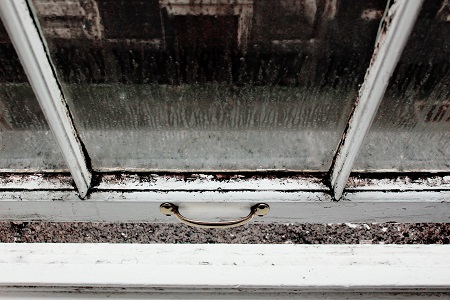For some landlords and tenants, damp can be a constant battle throughout the cold winter months. One of the most common causes of damp in rental properties is condensation, which appears when excess moisture in the air comes into contact with cold surfaces. Luckily, problems with condensation can usually be fixed quickly and easily without the need for professional help. Here are some top tips to reduce condensation and prevent damp in rental properties this winter:
1. Ventilation
Good ventilation is key to battling condensation in the home. Steam from cooking in the kitchen and running hot water in the bathroom can quickly re-form on surfaces as condensation so make sure you air rooms well by frequently opening windows, even in winter.
2. Avoid drying clothes inside
When possible, always try to dry clothes outdoors as wet laundry is a common source of condensation in the home. Living in the UK, this is often not possible so if you must dry clothes indoors, ensure that the room is well ventilated by opening doors and windows so that the air can circulate freely.
3. Use extractor fans
If you have one, always turn on your extractor fan while cooking and keep it on for at least 15 minutes afterwards to prevent condensation forming. It’s also a good idea to put lids on pans when cooking to reduce stem build-up in the kitchen.
4. Wipe away excess moisture
If you do not have an extractor fan in your bathroom or kitchen, make sure that you regularly wipe down windows, windowsills, walls and other cold surfaces with a dry cloth to remove any moisture that will have settled and prevent mould growth.
5. Make sure appliances are properly vented
The use of household appliances such as washing machines and tumble dryers can release a significant amount of moisture into the air. Make sure that your white goods are properly vented to prevent any moisture produced being emitted into your home.
6. Leave space between your furniture and the walls
It can be tempting to push furniture, such as sofas and cabinets, right up against the wall in order to maximise space in the home. However, doing so makes it easier for condensation to form on walls which over time could lead to mould growth. Leaving a gap between your furniture and walls allows the air to circulate freely and stop condensation settling on the walls.
7. Use a dehumidifier
Dehumidifiers work by absorbing moisture from the air into a tank, which you then simply pour away. If you do not wish to spend much money, small, non-electrical dehumidifiers are inexpensive and ideal for use inside wardrobes, behind cupboards, on windowsills and other areas prone to condensation build-up and mould growth.
8. Maintain a constant temperature in your home
During the cold winter months, where possible, try to maintain a consistent temperature in your home. It is better to keep your heating on a low level for longer periods throughout the day than to blast the heating on full in a cold house when you get home as this is when the interaction of cold and warm air can create condensation.
At Alex Jones, we carry out regular inspections on all our rental properties to look out for signs of mould and damp and have a team of contractors that can quickly deal with any issues to prevent long term damage. If you are a landlord currently managing your property yourself and would like any advice or more information on our full property management service, then please get in touch.



 By
By 


Share this with
Email
Facebook
Messenger
Twitter
Pinterest
LinkedIn
Copy this link